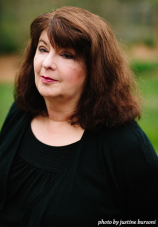Reading Group Guide
Discussion Questions
A Cloud in the Shape of a Girl

1. Lilacs play a pivotal emotional role for each of the three main characters. In Victorian times, lilacs were given as a reminder of first love, and were often worn by widows. Their name derives from the Greek word for “flute,” a reference to the legendary origin of pan flutes. Why do you think author Jean Thompson chose lilacs as the flower of resonance for Evelyn, Laura and Grace?
2. On page 5, Thompson writes, “But this was the house where [Evelyn] had been a bride, a wife, and now a widow, and she had no wish to leave it.” What does it mean to Evelyn that these three words, “bride, wife, widow” are how she describes the trajectory of her life? Is that how she’d describe herself? How do those identities fit her?
3. The idea of Andrew’s archive at the university is introduced in Chapter 1 and actually visited by Grace in the final pages of the novel. Contrast the legacy Andrew left behind with this sentence from page 7: “His wife might not have her own archive, but she did have her own story.” Whose stories are most likely to have been committed to official memory? Why?
4. Evelyn and Laura change their names in marriage, and Grace changed her name as a teenager before settling on going by her middle name. Discuss the act of naming and renaming as it pertains to female identity. If you’ve undergone a name change for any reason, discuss what it meant to you and how you went about it.
5. On page 35, Laura entertains some thoughts about what the world asks women to give up for their children and says “Everybody gives up something.” How do you think the expectations of motherhood shifted from Evelyn’s era, to Laura’s, to Grace’s? Do you think they’ve changed a lot, or a little? How about women’s reaction to those expectations?
6. During Evelyn’s interaction with Rusty, she realizes they might not be ideally suited. “An educated girl, she knew, was not always a welcome thing.” (page 63). How do Evelyn, Laura and Grace feel about their respective college educations? Compare their interactions with the university and their uses of their educations.
7. On page 73, Laura thinks “I have lived my life sandwiched between two angry women.” Does this reflect Evelyn and Grace accurately? Inaccurately? How else does Laura find herself “sandwiched” in the narrative?
8. With her brother Mark far away, Laura is tasked with cleaning out Evelyn’s house, as Grace is later tasked with cleaning up her mother’s possessions. Discuss the role of “women’s work” in the novel. Which tasks fall to women? Why? Do you think that work is a reflection of natural affinity? Of tradition? Of some other reason?
9. On page 94, Laura observes the interaction between Gabe’s parents at her and Gabe’s wedding. What do each of the characters, most specifically Laura and Evelyn, learn about marriage from observing their parents? Do you think that one is destined to repeat the patterns of marriage observed in childhood? What sort of marriage do you think Grace will have, should she decide to get married, and how will it be influenced by the marriages she’s observed?
10. On page 143, Grace expresses her impatience with the past. Do you think that impatience is a character trait, or a natural state of her youth?
11. Laura reassures Grace on page 155 that it’s okay if she doesn’t turn out like herself. In what ways are daughters a reflection of their mothers’ priorities? Sons a reflection of their fathers’? Is the pressure related to the children’s gender, or can the expectations cut across gender lines?
12. “What a wonderful invention, the body” (page 164). When was the last time you felt such wonder at the complexity and reliability of your body as Grace feels when dancing at her brother’s show? When in the narrative do you see Evelyn and Laura feeling that wonder?
13. Both Evelyn and Laura first approach the men who will become their husbands. How do you view the role of taking charge in those instances as it relates to “destiny”? Do you think either of these women ended up with the men they were supposed to be with? Or does “meant to be” not enter into the equation?
14. On page 204, Laura says, “But if you want to know who really loves you, look around and see who’s still standing next to you.” Can you discuss the role Laura’s family plays in her final moments? Who is still standing next to her, and in what configuration?
15. What do you make of Les Moore’s character? What role does he ultimately play in Grace’s life? How does he compare with the other male characters that have impacted the lives of Evelyn, Laura and Grace? Does he ultimately stand apart, or do all the men (Andrew, Gabe, Michael, as well as Rusty and Bob) share similarities?
A Cloud in the Shape of a Girl
- Publication Date: October 22, 2019
- Genres: Fiction
- Paperback: 352 pages
- Publisher: Simon & Schuster
- ISBN-10: 1501194372
- ISBN-13: 9781501194375







